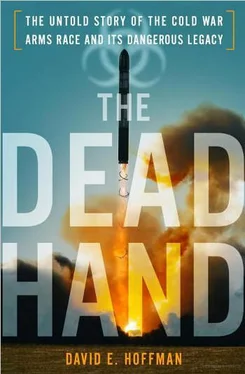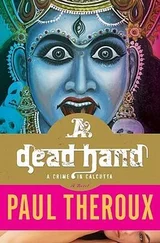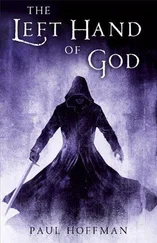He also recounted the symptoms of the victims, the deaths of workers at the ceramics factory, the decision to send patients to hospital No. 40 and the announcement that tainted meat caused the outbreak. He added, “This explanation was not accepted by the doctors in attendance because the fatalities were caused by the pulmonary type of anthrax as opposed to the gastric or skin anthrax which would be more likely if one had eaten or handled contaminated beef.” The intelligence agency concluded in the report that the information “presents a very strong circumstantial case for biological weapons activity” at the facility.
In Moscow on Monday, March 17, 1980, the U.S. ambassador, Thomas Watson, raised the Sverdlovsk anthrax epidemic in a quiet inquiry with the Soviet Foreign Ministry. 16The ministry did not respond right away. In Washington on Tuesday, March 18, a State Department spokesman, responding to questions from journalists, read out a public statement saying there were “disturbing indications” that “a lethal biological agent” might have hit Sverdlovsk in 1979 and this had raised questions “about whether such material was present in quantities consistent with” the biological weapons treaty. The Soviets were surprised by the State Department’s public announcement, which they hadn’t expected. 17The Soviet response came on Thursday, March 20, that the outbreak was caused by contaminated meat. 18The issue was extremely sensitive because that same week in Geneva, diplomats from fifty-three countries were winding up the first five-year review conference of the Biological Weapons Convention. They were on the verge of approving a final declaration. The U.S. ambassador to the talks, Charles Flowerree, told his Soviet counterpart, Victor Israelyan, about the message of concern over Sverdlovsk delivered in Moscow.
The Soviets decided to keep stonewalling. On Friday, March 21, acting on instructions from Moscow, Israelyan made a public statement to the conference. He reassured the conference there was nothing to worry about. “There are no grounds whatsoever” for the questions raised by the United States, he said. “In March–April 1979 in the area of Sverdlovsk there did in fact occur an ordinary outbreak of anthrax among animals, which arose from natural causes, and there were cases where people contracted an intestinal form of this infection as a result of eating meat from cattle which was sold against the regulations established by the veterinary inspectorate.” 19
The same day, after this statement, the conference approved a final declaration on the Biological Weapons Convention. The treaty was working, the member states declared. No one had filed any complaints about violations. Indeed, the word “violation” did not even appear in the final declaration. All the nations that signed the treaty reaffirmed their “strong determination for the sake of all mankind” to avoid biological weapons. 20
A week later, the United States passed a secret message back to Moscow, saying that “reports available to us indicate a prolonged outbreak of pulmonary anthrax in Sverdlovsk, involving a large number of fatalities. Based on our experience, we would expect an outbreak of anthrax resulting from contaminated meat to have been of relatively short duration and to have resulted in only a small number of fatalities.” 21
In Washington, the Central Intelligence Agency turned to experts, including Matthew Meselson, the Harvard molecular biologist who had earlier urged Nixon to outlaw biological weapons. Meselson got a call from Julian Hoptman, the CIA’s longtime analyst of biological weapons. For a week, Meselson stayed at Hoptman’s home, and, with secret clearances, worked at Hoptman’s office at CIA headquarters. They pored over the raw intelligence reports, but the evidence was ambiguous. Hoptman had located the practicing surgeon from Sverdlovsk mentioned in the DIA report, who had emigrated to Israel, and interviewed him. But other sources traveling through Sverdlovsk heard nothing about an epidemic. It turned out the report of an explosion was not correct, but there were many unanswered questions, especially about the diagnosis. In notes he made from that week, Meselson wrote, “The main technical question in my mind at this point concerns the diagnosis of respiratory anthrax.” Was the anthrax inhaled by the victims, which might point to biological weapons dispersed in an aerosol, or was it ingested by them, which could be explained by distribution of bad meat? Or was it some other respiratory disease altogether?
A related puzzle was why the cases continued for seven weeks. The textbooks Meselson consulted had suggested the incubation period for anthrax was a few days. If there was a single cloud of spores, there should have been a rapid fall-off of new cases. Instead, people kept getting sick for quite some time. In his work in Hoptman’s office, Meselson concluded that they needed to know much, much more before they could reach a conclusion. Where did the victims work when they were exposed? Where did they live? Which direction were the winds blowing? What would they learn if they plotted all the victims on a map, and then drew an ellipse from Compound 19—how many would be inside that ellipse? And what was going on at Compound 19? Did the local authorities respond with drug therapy, and if they did, was it effective? Why were there so many fatalities if they had drugs readily available? At this early stage, Meselson was cautious, and probing. Meselson also learned that a Northwestern University physicist, Donald Ellis, had been on an academic exchange program with his family in Sverdlovsk at the time. He tracked down Ellis, who recalled he heard nothing about the epidemic. This added to Meselson’s sense of caution. 22
Biological weapons were the ultimate challenge for spies, soldiers and scientists. From space, satellites could photograph intercontinental ballistic missile silos, and they could be counted. But germs were another matter. A satellite might spot an unusual building compound, like the one in Sverdlovsk, but seeing flasks in laboratories proved nearly impossible. That is why understanding Sverdlovsk was so important. It was a tantalizing bit of genuine evidence. With Sverdlovsk, the enormity of the Soviet germ warfare program had been glimpsed, but was still not proven.
———
After the Sverdlovsk accident, Soviet officials shipped a large supply of anthrax bacteria out of the city to a distant storage facility at Zima, near Irkutsk in Siberia. They wanted to get anthrax production running again, but they needed a new location. They knew Compound 19 would be suspect. Compound 19 was a military facility; now the Soviet officials wanted to hide the anthrax production more carefully. The best cover was Biopreparat, the supposedly civilian pharmaceutical enterprise. In 1981, Brezhnev approved relocating the Sverdlovsk facility. The destination was a remote desert town, Stepnogorsk, in northern Kazakhstan. This was a Biopreparat operation, and Ken Alibek was chosen to run it. 23
Alibek was an ethnic Kazakh. After graduation from the Tomsk Medical Institute as a military doctor, he was assigned to a biopesticide factory at Omutninsk in western Russia, a training ground for those who would work on biological weapons. 24From the start, he recalled, “there were no orientation lectures or seminars, but if we had any doubts as to the real purpose of our assignment, they were quickly dispelled.” They were asked to sign a pledge of secrecy, then called in one by one to meet their KGB instructors.
“You are aware that this isn’t normal work,” the officer told Alibek as he sat down, more a declaration than a question.
“Yes,” Alibek replied.
“I have to inform you that there exists an international treaty on biological warfare, which the Soviet Union has signed,” the officer said. “According to that treaty no one is allowed to make biological weapons. But the United States signed it too, and we believe the Americans are lying.”
Читать дальше












